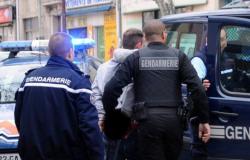In May 2023, the French bishops voted in favor of the beatification of Cardinal Henri de Lubac, the great Jesuit theologian of the 20th century who profoundly influenced the Second Vatican Council and the thinking of the contemporary Church. A year later, Rome also gave the green light, and a committee was mandated by Bishop Éric de Moulins-Beaufort, who chairs the International Association of de Lubac, and Bishop Olivier de Germay, the Archbishop of Lyon, the diocese that officially opened his beatification process. Its mission? The establishment, by the end of 2024, of a crowdfunding campaign that should make it possible to pay for this process. Because the procedure, from the initial research to the submission of the file to the Roman office responsible for studying it, is expensive.
Funding research
The first line of accounting is the cost of the investigation that will allow the candidate’s file to be compiled. This involves studying the theological and moral virtues of the future blessed, which requires historical research and the collection of testimonies. The quantity – and therefore the cost – of this documentation work will depend on the work, the longevity or the controversies that it may have aroused during its lifetime.
“Usually, the file is brought by a diocese or a congregation, which designates a religious or, at least, someone who, in the diocese, is already paid, to devote himself to the research,” explains Emmanuel Tourpe, a temporary lecturer at the University of Strasbourg and coordinator of the crowdfunding campaign for the cause of Lubac. In the case of this beatification process, the situation is “very special, he explains. Because it turns out that one of the best specialists in cardinal de Lubac is a secular person”. If the file is officially supported by the diocese of Lyon, the work of developing the file was entrusted to Marie-Gabrielle Lemaire, a theology researcher at the University of Namur, in Belgium.
Since she is not paid by the diocese of Lyon, it is up to her and the committee to find the funding to pay. “the equivalent of a three-year research part-time position”estimates Emmanuel Tourpe. But the committee has had to revise its ambitions downwards. For the moment, the fundraising campaign projects an amount of €38,000. “Enough to meet the needs of six months of research in 2025, during which we will try to advance as much as possible,” notes Marie-Gabrielle Lemaire.
€45,000 in administration fees
Once the application file is completed and the diocesan phase is closed, the file is then entrusted to a postulator in Rome. “The postulator is a kind of lawyer,” explains Augustin Mohrer, professor of economics and author of The Factory of Saints (1). “As an expert on the Vatican and its administrative procedures, the postulator will take up, improve and plead for the file which will be submitted for study to a college of theologians in Rome, then to the dicastery for the causes of saints.”
Two new budget lines then appear: the postulator’s expenses, “equivalent to that of a lawyer, or €2,000 per day “, estimates Augustin Mohrer, who estimates the workload of the postulator at about fifteen days. Then, the application fees, requested by the college of theologians and the dicastery for the causes of saints, which amount to « environ 45 000 € »the economist says. “But this sum can quickly increase, depending on the file, which can contain between 100 and 15,000 pages, and the verification time required.”
Invisible costs and tough competition
In reality, what costs the most, reveals Augustin Mohrer, “These are the invisible costs, those which aim to move the candidate up the pile”. According to the economist, the competition is tough: around 2,500 beatification files are pending in Rome, and the processing of a candidacy takes between twelve and fifteen years. Over this period, it will therefore be a question of pleading for one’s postulant over the long term. Do some give money directly to the cause of the saints? Augustin Mohrer rules this out. Concretely, these invisible costs amount to round trips to Rome, and potential additional costs with one’s postulator.
“The richer a diocese is, the more influential it will be in pleading its cause, explains the researcher. There are therefore many more European beatified than African or Asian ones.. It is quite contradictory, because Rome is trying to have more saints from distant lands, especially from South America, because the Pope is Argentinian.” In 2014, François introduced a fee structure for applicants’ fees, in order to achieve fairer processing of applications. “But again, the economist emphasizes, It is the invisible costs that cost the most and are very difficult, if not impossible, to control.”
(1) Atlante, 2021, 234 p., €19.
—-
Fourteen new saints announced for October 20
During the ordinary public consistory convened at the Vatican on July 1 by the Pope, the date of October 20 was set for fourteen future new saints, including the “eleven martyrs of Damascus” (assassinated in 1860 by a commando of Druze fighters in the Franciscan monastery in the Christian quarter of Bab-Touma). Three founders of congregations are on the list: the Italian priest Joseph Allamano, founder of the Missionaries of the Consolata; the Canadian nun Marie-Léonie Paradis, foundress of the Little Sisters of the Holy Family; and the Italian nun Elena Guerra, foundress of the Oblates of the Holy Spirit. Carlo Acutis (an Italian layman who died in 2006 at the age of 15) should be canonized during the jubilee year of 2025, along with other blesseds.






